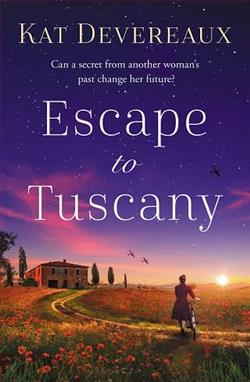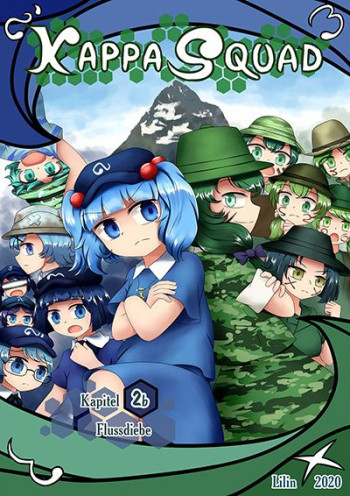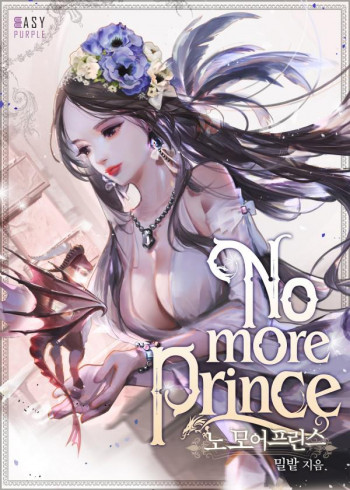Summary

Escape to Tuscany
by Kat Devereaux
'A rich and engaging vision of life gone by and a lust for one woman's future, rolled into one. And now I want to move to Italy!' Mandy Robotham
Romituzzo, 1944
Just fourteen, Stella Infuriati is the youngest member of her town's resistance network – a secret she keeps even from her parents. She works alongside her brother Achille to relay messages, supplies and weapons to partisan groups in the Tuscan hills. Fuelled by courage and a fierce sense of purpose, Stella braves incredible danger and survives... but when peace comes in 1945, she vanishes.
Florence, 2019
Writer Tori MacNair arrives in Florence. Fleeing an emotionally abusive marriage, she's come to build a new life in the city her grandmother taught her to love. As she digs into her family history, Tori uncovers decades-old secrets about a brave young woman who risked everything to save her world. As Tori and Stella's stories intertwine, they reveal the power of love, community, and sacrifice across the generations.
.
Read
Escape to Tuscany on http://kissnovel.net
Martial Peak Reviews
'Escape to Tuscany' by Kat Devereaux is a beautifully woven tale that spans generations, intertwining the lives of two remarkable women against the backdrop of war-torn Italy and the vibrant streets of modern Florence. This novel is not just a historical narrative; it is a profound exploration of resilience, identity, and the enduring power of love and sacrifice. Devereaux's storytelling is rich and evocative, transporting readers to the sun-drenched hills of Tuscany and the bustling life of Florence, making it a compelling read for anyone who has ever dreamed of escaping to Italy.
The novel opens in 1944, introducing us to Stella Infuriati, a mere fourteen years old but already a vital member of her town's resistance network. Devereaux paints a vivid picture of Stella's bravery as she navigates the dangers of war, delivering messages and supplies to partisan groups. The author captures the essence of youth amidst chaos, showcasing Stella's courage and fierce sense of purpose. This portrayal is not only engaging but also serves as a reminder of the often-overlooked contributions of young people during wartime. Stella's character is well-developed; her internal struggles and motivations are explored deeply, making her a relatable and inspiring figure.
As the narrative shifts to 2019, we meet Tori MacNair, a writer seeking solace and a fresh start in Florence after escaping an emotionally abusive marriage. Tori's journey of self-discovery is compelling, as she grapples with her past while uncovering her family's history. Devereaux skillfully contrasts Tori's modern struggles with Stella's wartime experiences, creating a rich tapestry of female resilience across generations. Tori's character development is poignant; her evolution from a woman seeking refuge to one who embraces her heritage and strength is beautifully portrayed. The author effectively uses Tori's exploration of her family history as a vehicle for self-empowerment, making her journey resonate with readers who may have faced similar challenges.
Thematically, 'Escape to Tuscany' delves into the concepts of love, community, and sacrifice. Both Stella and Tori's stories highlight the importance of connection—whether it be through family ties, friendships, or romantic relationships. Devereaux emphasizes how love can be a source of strength, even in the darkest of times. The novel also explores the idea of sacrifice, not just in the context of war but in personal relationships as well. Stella's sacrifices for her community and Tori's sacrifices in her marriage create a powerful narrative thread that binds their stories together.
Devereaux's writing is lyrical and immersive, with a keen eye for detail that brings the settings to life. The descriptions of Tuscany are particularly enchanting, evoking a sense of longing and nostalgia. Readers can almost feel the warmth of the sun and the vibrancy of the local culture. This vivid imagery enhances the emotional weight of the story, making the reader yearn for the beauty of Italy while simultaneously grappling with the harsh realities faced by the characters.
Moreover, the dual timeline structure of the novel is executed with finesse. Devereaux seamlessly transitions between the past and present, allowing readers to draw parallels between Stella and Tori's lives. This narrative technique not only enriches the storytelling but also underscores the idea that the past is never truly behind us; it shapes our identities and influences our choices. The interweaving of their stories culminates in a powerful revelation that ties their experiences together, leaving readers with a sense of closure and hope.
In comparison to other works in the genre, 'Escape to Tuscany' stands out for its strong female protagonists and its focus on the impact of history on personal identity. Similar to Kristin Hannah's 'The Nightingale', which also explores the lives of women during World War II, Devereaux's novel emphasizes the strength and resilience of women in the face of adversity. However, what sets Devereaux's work apart is the dual narrative that connects the past with the present, offering a fresh perspective on how history continues to resonate in our lives today.
Overall, 'Escape to Tuscany' is a captivating read that will resonate with anyone who appreciates stories of courage, love, and the quest for identity. Kat Devereaux has crafted a narrative that is both heart-wrenching and uplifting, inviting readers to reflect on their own lives while immersing them in the rich tapestry of Italian history and culture. This novel is a testament to the enduring spirit of women and the profound connections that transcend time and place. It is a story that will linger in the hearts of readers long after the last page is turned, making it a must-read for fans of historical fiction and contemporary women's literature alike.
























Reviews 0
Post a Reviews: